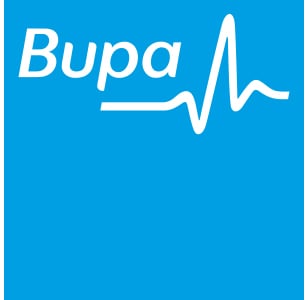Looking after our muscle health and continuing strength training as we age can be an essential contributor to our health, keeping us strong, reducing the risk of disease and increasing life expectancy.
The importance of muscle-strengthening
Strength training is important for preserving muscle mass, bone density, and joint health as you age. Our muscle mass typically reduces by 3-5% each decade after age 30. Beyond ageing, other causes of muscle mass loss includes: disease, injury and physical inactivity.
Whilst muscle mass loss from ageing is natural, incorporating core muscle-strengthening exercises into our lifestyles can help.
It is recommended by the NHS to do two or more sessions of muscle strength training each week. This doesn’t just have to be weight lifting, it can even be done without a gym membership or owning any equipment!
Activities such as, climbing stairs, hill walking, cycling and yoga all contribute to muscle strength.
What are the benefits of strength training?
There are some notable health benefits that come from strength training including:
- Preventing injuries - having strong muscles helps to reduce the risks of falls
- Improving balance - loss of muscle with age can make it more difficult to do typical daily activities
- Bone health - looking after our muscle health helps to protect our bones and keep them healthy
- Improving mental health - as with all exercising, strength training can release positive endorphins which reduce stress and improve our mood.
One main benefit of continuing to strengthen our muscles as we age is the link to increased life expectancy. A study in the British Journal of Sports Medicine highlighted that weightlifting and moderate to vigorous physical activity were associated with a lower risk of all-cause and cardiovascular mortality.
It’s also known to reduce the risk of diseases, which can contribute to improved quality of life.
.jpg?width=3908&height=2595&name=pexels-scottwebb-28061%20(1).jpg)
What causes loss of muscle?
Whilst muscle loss with age is natural, there are some things that can cause loss of muscle at a quicker rate.
Disuse and inactivity:
One key cause of loss of muscle is disuse and inactivity. As we get older or head into retirement, we can often be guilty of not staying active when life begins to slow down.
Incorporating exercise and strength training into your weekly routine can be beneficial, aiming to stick to the NHS recommendation of two strength based exercises a week.
Limited mobility:
Another cause of loss of muscle mass can be limited mobility, which may become common as we get older. Muscle strengthening can still be achieved with limited mobility. Weight bearing activities such as walking, dancing and climbing stairs all help muscle health and strength as you use your own body weight as resistance.
Malnutrition:
Malnutrition can be a cause for muscle loss. If you don’t get enough protein in your diet, the body will take protein from muscles to preserve other tissues and functions, which can lead to muscle wasting over time.
Neurogenic conditions:
Neurogenic conditions occurs due to a nerve problem or diseases. They are a contributor to loss of muscle mass.
This can typically be noticed by symptoms which include: one arm or leg being smaller than the other, weakness in the arms or legs and trouble walking or balancing.
Neurogenic atrophy is caused by an injury or disease affecting nerves that connect to your muscles. When these nerves are damaged, they can’t trigger the muscle contractions that are needed to stimulate muscle activity. This leads our body to think we don't need them anymore and then it starts to break down our muscles.
How to build muscle strength
There are many ways to build muscle strength for different abilities beyond weight lifting! The NHS recommend the following ways to improve strength and flexibility: lifting weights, resistance training, climbing stairs, hill walking, cycling, yoga and heavy gardening.
.jpg?width=6000&height=4000&name=pexels-fotios-photos-1453499%20(1).jpg)
What are weight bearing exercises?
Weight bearing exercises help to build muscle which support and protect our joints and increase balance.
Weight bearing exercises means our feet and legs support our weight and they are particularly beneficial for preventing osteoporosis, a health condition that weakens bones, making them fragile and more easy to break.
We gradually start losing bone from around the age of 35, similar to muscle. Strengthening both can go hand in hand to improve quality of life.
Weight bearing exercises include: running, skipping dancing and aerobics, which strengthen our muscles, ligaments and joints.
How long does it take to build muscle?
It’s important to firstly be aware that everyone is different and many different factors can affect rate of muscle gain for a person, including: age, diet, gender, type of training and frequency of training.
The most commonly quoted figures are between 1-2lbs of muscle per month for men and 0.5-1lb of muscle per month for women. Whilst gaining muscle isn’t an instant fix and can take time to see results, it's still an important factor to increase longevity.
How to improve muscle health
We’ve discussed the impacts of loss of muscle mass and exercises to strengthen core muscles, but there are ways to improve our overall muscle health too.
To improve health and prevent injury, it is recommended to:
- Spend at least 10 minutes warming up the muscles you plan to use
- Drink enough water to provide your muscles with electrolytes
- Eat a nutritionally balanced diet rich in fruits, veg, dairy and whole grains
- Eat protein to help to repair your muscles and strengthen the tissue
.jpg?width=5456&height=3632&name=pexels-pixabay-163491%20(1).jpg)
Overall, aiming to improve our muscle strength and muscle health plays a crucial role in our physical health as we begin to age.
If you currently have a health insurance policy, it's worth checking to see the benefits included in your policy. Often physiotherapy sessions can be included as part of the core cover and discounted gym memberships.
If you're considering health insurance, it's worth taking a look at the different benefits health insurers offer and how they can impact your quality of life.
You can talk to an expert adviser to find a suitable health insurance policy and understand all the benefits available to live a healthier lifestyle on 01285 864670.
Related Posts
Get a quote!
Compare the best health and life insurance policies on the market by filling in the short form below.
Thank you, John
We will be in touch shortly to run through your free tailor-made quote from UK’s leading insurers. Our prices won’t be beaten with our best price guarantee.
At Usay we take your data security very seriously and we will not sell your data to third parties. By clicking search now you agree to allow us to contact you regarding your free, no obligation quotation by email or phone. Please see our Privacy Policy and general terms.







.jpg)
.jpg)
.jpg)